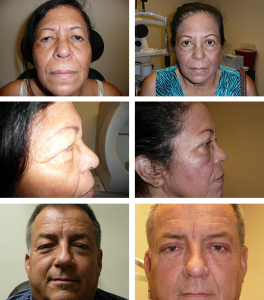Blepharoplasty, or eyelid surgery, is a surgical procedure performed to enhance the eyelid aesthetics. The procedure aims to correct the deformities and defects of the eyelids by removing or adding excess skin, muscle and fat. Many times, individuals are dissatisfied with their droopy eyelids aesthetically; however, baggy and droopy eyelids can also affect the quality of the individual’s peripheral vision, also known as your side vision.
The blepharoplasty procedure
The procedure treats bags under the eyes, droopy or sagging skin in the upper eyelids leading to vision impairment, excess fatty deposits causing puffiness in the eyelids, and drooping lower eyelids. The common misconception of blepharoplasty surgery is that the eyelid is ‘lifted’ which is not the case. Eyelid surgery helps remove excess skin and reshape the eyelid. If the eyelid itself is drooping a procedure called ptosis repair is performed where the eyelid muscles are strengthened to lift the eyelid. These procedures can help reduce or eliminate vision problems while making the eyes appear younger and more alert.

If the procedure is performed on the upper eyelid, an incision is made on the eyelids to trim the excess skin. The skin is then stitched together joining the skin which creates an eyelid crease. The incisions are made along the natural eyelid crease which allows for the scarring to blend naturally.
If the procedure is performed on the lower eyelid, there are two main approaches to the lower eyelid procedure. The most common approach is known as the subciliary approach. This method is used for patients who are looking for the reduction of excess skin and wrinkles and the reshaping of the eyelid fat; an incision is made directly below the lash line. The second approach is known as the transconjunctival approach. This approach is used for patients who need fat added to or removed from the eyelid. Sometimes during the procedure, the tightening of the eyelid is needed for maximum correction of saggy eyelids.
Both procedures are performed for the enhanced appearance of the eyes and to help avoid any peripheral visual functional problems. Prior to any surgery, the patient should have a thorough and detailed discussion about the potential risks associated with the procedure. To help decide if eyelid surgery is right for you, learn about the realistic expectations and benefits by speaking to Dr. Greenbaum.
Dr. Greenbaum is an experienced, well-trained and Board-Certified ophthalmologist who has performed numerous blepharoplasties, both functional and cosmetic. Schedule an appointment today!
Source: National Eye Institute
